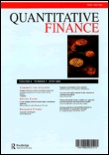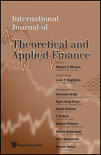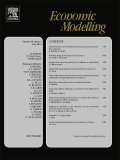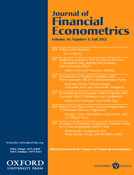
Review of Derivatives Research
Scope & Guideline
Illuminating Financial Theories through Rigorous Research
Introduction
Aims and Scopes
- Theoretical Modeling of Derivatives:
The journal publishes research that develops and evaluates theoretical models for pricing and managing risk associated with derivatives, including options, futures, and swaps. - Empirical Analysis of Market Behavior:
Research often includes empirical investigations into market dynamics, volatility patterns, and pricing anomalies in derivative markets, providing insights into how derivatives behave in real-world scenarios. - Risk Management and Hedging Strategies:
The journal emphasizes studies that explore innovative risk management techniques and hedging strategies using derivatives, particularly in volatile and uncertain market environments. - Applications of Advanced Mathematical Techniques:
Contributions frequently apply advanced mathematical and statistical methods, including stochastic calculus and machine learning, to enhance pricing models and risk assessment frameworks. - Interdisciplinary Approaches:
The journal supports interdisciplinary research that integrates concepts from finance, economics, and quantitative methods to address complex issues in derivative research.
Trending and Emerging
- Cryptocurrency Derivatives:
The increasing focus on cryptocurrency options and derivatives showcases the growing importance of digital assets in the financial landscape and the need for innovative pricing and risk management solutions. - Stochastic Volatility Models:
There is a rising trend towards the use of stochastic volatility models in derivative pricing, reflecting a deeper understanding of market behaviors and the need for more sophisticated modeling techniques. - Liquidity Risk in Derivatives:
Research addressing liquidity risk in various derivative contexts is gaining traction, highlighting the significance of liquidity as a critical factor influencing pricing and trading strategies. - Machine Learning Applications:
The application of machine learning techniques in derivative research is on the rise, indicating a shift towards data-driven methodologies that enhance predictive capabilities and model accuracy. - Behavioral Finance Perspectives:
Emerging studies incorporating behavioral finance into derivative pricing and market analysis suggest a growing recognition of psychological factors influencing trader behavior and market outcomes.
Declining or Waning
- Traditional Option Pricing Models:
There appears to be a declining focus on traditional option pricing models, as newer methodologies and models are gaining traction, possibly due to the limitations of classical approaches in capturing market complexities. - Static Hedging Techniques:
Research centered around static hedging techniques is becoming less frequent, as practitioners and researchers pivot towards more dynamic and adaptive hedging strategies that respond to market movements. - Basic Derivative Instruments:
There is a noticeable reduction in studies focusing solely on basic derivative instruments, such as vanilla options, as the journal shifts towards more complex derivatives and innovative risk management tools. - Historical Analysis of Derivatives Markets:
The exploration of historical data and trends in derivatives markets is waning, possibly indicating a preference for contemporary issues and real-time analytics in derivative research.
Similar Journals

QUANTITATIVE FINANCE
Empowering research excellence in quantitative methods.QUANTITATIVE FINANCE, published by Routledge Journals, Taylor & Francis Ltd, stands at the forefront of academic research in the dynamic fields of finance, economics, and econometrics. With a strong commitment to disseminating cutting-edge research, this esteemed journal, which has been published since 2001 and continues to thrive with an anticipated convergence until 2024, occupies a prestigious Q1 ranking in Economics, Econometrics, and Finance and a Q2 ranking in Finance as of 2023. It serves as an essential platform for interdisciplinary studies, aiming to bridge theoretical approaches and practical applications in quantitative methods. Researchers, professionals, and students are provided access to a wealth of high-quality articles that contribute to the ongoing discourse and advancements in these fields. As the journal continues to impact its community, QUANTITATIVE FINANCE remains an invaluable resource for those seeking to stay at the cutting edge of financial research and its applications globally.

Journal of Derivatives
Navigating the Complexities of Derivative Markets.Welcome to the Journal of Derivatives, a premier platform for the dissemination of cutting-edge research in the fields of Economics, Finance, and Econometrics. Published by PAGEANT MEDIA LTD, this esteemed journal has been a vital source of knowledge since its inception in 1996, with a commitment to fostering academic excellence through rigorous peer-reviewed studies. Though it presently does not operate under an open access model, the journal continues to maintain a respectable presence within its field, recognized as Q3 in both Economics and Finance as of 2023. Researchers and practitioners alike will find valuable insights and innovative methodologies, reflected in its competitive Scopus rankings, which place it among the best in its category. As the journal engages with a diverse array of topics related to derivatives and their applications, it serves as an essential resource for those seeking to deepen their understanding of financial instruments in today’s ever-evolving economic landscape. Join us in exploring the latest advancements and discussions in this critical area of study.

Annals of Finance
Fostering Innovation in the World of FinanceThe Annals of Finance, published by Springer Heidelberg in Germany, stands as a pivotal journal within the realms of Economics, Econometrics, and Finance. With a dedicated convergence of research from 2005 to 2024, this esteemed publication features thought-provoking articles that address both theoretical and practical aspects of finance, earning it a commendable Q2 category ranking in the 2023 metrics for both Economics, Econometrics and Finance as well as Finance. The journal serves an essential role in disseminating knowledge and fostering advancements in the field, appealing to researchers, professionals, and students alike. Its rigorous peer-review process ensures the integrity and quality of published works, making it a reliable source for cutting-edge findings and discussions within the finance community. For those looking to navigate the complexities of modern finance through rigorous research, the Annals of Finance is an invaluable resource.

Journal of Risk
Exploring the Complexities of Risk ManagementJournal of Risk, published by INCISIVE MEDIA, serves as an essential platform for scholars and practitioners in the fields of finance and strategic management. With an ISSN of 1465-1211 and an E-ISSN of 1755-2842, this journal explores the multifaceted nature of risk, encompassing theoretical frameworks, empirical investigations, and practical applications. Although currently classified in Q4 for both Finance and Strategy and Management categories as per 2023 standards, it provides a crucial forum for innovative research and thought leadership, addressing the challenges faced in understanding and managing risk in today’s dynamic environment. The journal, based in the United States, is committed to advancing knowledge and offering a platform for debate and dialogue in its convergence years from 2011 to 2024. Researchers, professionals, and students are encouraged to contribute their insights to enhance the academic discourse surrounding risk management.

International Journal of Theoretical and Applied Finance
Unveiling the nuances of theoretical and applied finance.International Journal of Theoretical and Applied Finance is a distinguished publication in the field of finance, serving as a critical platform for the dissemination of innovative research and theoretical insights since its inception in 2003. Published by World Scientific Publishing Co Pte Ltd in Singapore, this journal boasts an impressive Q2 ranking in the realms of Economics, Econometrics, and Finance (miscellaneous) and a solid Q3 status in Finance for 2023. With a commitment to advancing knowledge in the complex world of theoretical frameworks and applied financial practices, it welcomes original research articles, comprehensive reviews, and case studies that explore varied facets of finance. Researchers, professionals, and students benefit from the journal's rigorous peer-review process and an ever-expanding repository of knowledge, making it an indispensable resource in the financial academic community. The journal does not currently offer open access, reflecting its selective approach to publishing high-quality content aimed at a specialized audience.

Decisions in Economics and Finance
Bridging Theory and Practice in FinanceDecisions in Economics and Finance, published by SPRINGER INT PUBL AG, is a leading journal in the fields of economics, econometrics, and finance, providing a critical platform for researchers, professionals, and students to disseminate their findings and insights. With an impressive impact factor positioned in the Q2 category for both Economics and Finance in 2023, this journal is recognized for its rigorous peer-reviewed process and impactful research contributions. The journal spans over areas of general economics and finance, emphasized by its Scopus rankings, which place it in the 68th and 50th percentiles respectively. Since its inception in 1997 and continuing through its conferred years, Decisions in Economics and Finance continues to foster innovative approaches to economic and financial decision-making while bridging theoretical and practical applications. While it currently does not offer Open Access options, its commitment to quality research and interdisciplinary collaboration makes it a vital resource for anyone engaged in these dynamic fields.

Journal of Computational Finance
Bridging theory and practice in the world of finance.Journal of Computational Finance, published by INCISIVE MEDIA, stands at the forefront of interdisciplinary research, amalgamating the realms of finance, applied mathematics, and computer science. With its ISSN 1460-1559 and E-ISSN 1755-2850, this journal provides a vital platform for scholars and practitioners alike, aiming to advance methodologies and computational techniques that enhance financial decision-making processes. Although currently categorized in the Q3 quartile across various disciplines—including Applied Mathematics, Computer Science Applications, and Finance—its commitment to quality research is unwavering, as evidenced by its curated selection of innovative studies. The journal’s scope includes computational modeling, algorithmic trading, risk management, and quantitative finance solutions. Each volume seeks to not only foster academic discourse but also bridge theoretical findings with practical applications in the financial industry. Given its convergence from 2011 to 2024, the journal continues to evolve alongside the rapidly changing financial landscape, supporting researchers, students, and professionals in navigating the complexities of computational finance.

ECONOMIC MODELLING
Elevating Economic Analysis to New Heights.ECONOMIC MODELLING, published by Elsevier, is a leading academic journal in the field of Economics and Econometrics, with a commendable impact factor that underscores its significance within the research community. Since its inception in 1984, this journal has been pivotal in disseminating high-quality research that contributes to the advancement of theoretical and empirical methodologies in economics. As a Q1 journal in its category, it ranks in the top 88th percentile according to Scopus, solidifying its reputation as an influential platform for economists and academicians. Although it does not offer open access, the journal maintains a robust subscription model, ensuring wide distribution of critical insights and findings. Researchers, practitioners, and students are encouraged to engage with the latest developments in economic modelling, making ECONOMIC MODELLING an essential resource for anyone seeking to understand and contribute to the evolving landscape of economic theory and application.

Journal of Financial Econometrics
Empowering researchers with cutting-edge econometric techniques.Journal of Financial Econometrics, published by Oxford University Press, stands as a leading academic journal in the fields of financial economics and econometrics. With an impressive impact factor and a ranking in the Q1 quartile for both Economics and Finance categories in 2023, this journal is recognized for its contribution to advancing theoretical and applied methodologies in financial econometric analysis. It publishes high-quality research that addresses critical issues in finance, aiming to foster a deeper understanding of the economic factors influencing financial markets and instruments. Researchers and practitioners alike benefit from its rigorous peer-reviewed articles, which are invaluable resources for both academic scholars and finance professionals. The journal’s content typically spans pioneering techniques in econometric modeling, empirical analysis of financial instruments, and innovative applications of econometric theory in real-world scenarios. Operating out of the United Kingdom, the journal continues to serve as a vital platform for disseminating significant research findings from 2005 to 2024, ensuring that the latest advancements in the field are accessible to its audience.

SIAM Journal on Financial Mathematics
Pioneering Innovations in Financial MathematicsThe SIAM Journal on Financial Mathematics, published by SIAM PUBLICATIONS, is a premier journal dedicated to the intersection of applied mathematics and finance. With an ISSN of 1945-497X, this journal serves as a vital platform for the dissemination of innovative research that addresses complex financial problems through mathematical modeling and analytical techniques. The journal has established itself within the Q2 quartile in the categories of Applied Mathematics, Finance, and Numerical Analysis, reflecting its influence and significance in these fields. Researchers and practitioners will find a wealth of knowledge spanning topics from stochastic calculus to quantitative finance, making it essential for anyone aiming to advance their understanding of financial mathematics. As the journal continues to converge from 2010 to 2024, it promises to remain a cornerstone resource for academics, professionals, and students alike, facilitating the ongoing dialogue between mathematics and its applications in the financial industry.